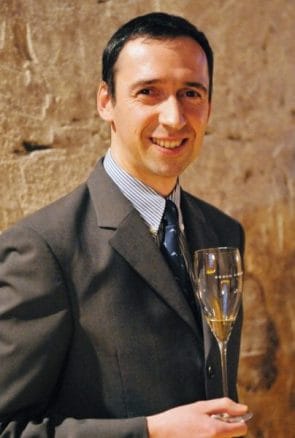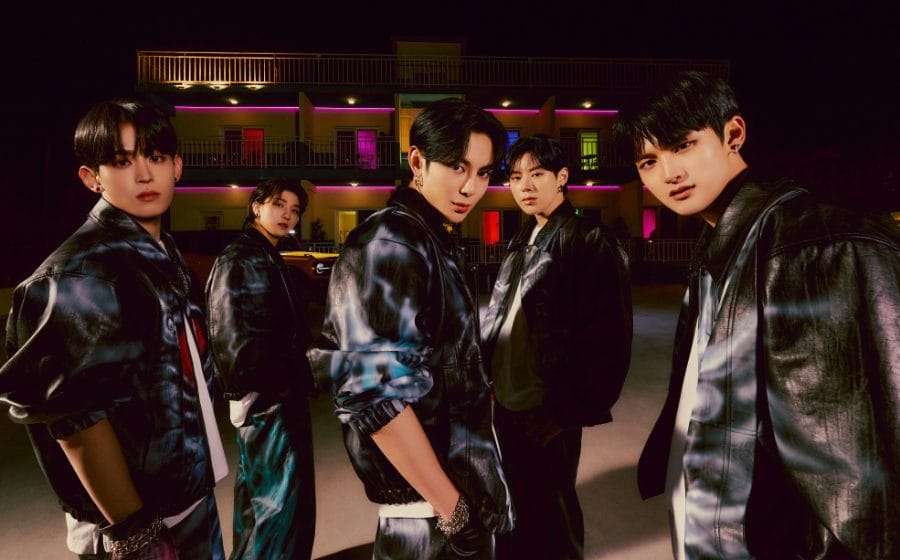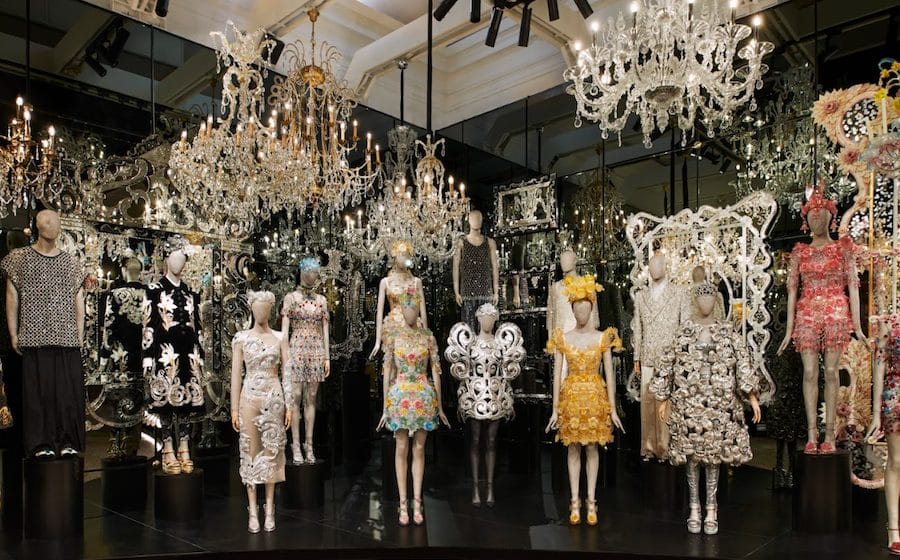![%C2%A9Moet&Chandon_MCIII_Hybrid_1 (Native) [MHISWF094031 Revision-1]](https://cdn.mens-folio.com/2016/06/C2A9MoetChandon_MCIII_Hybrid_1-Native-MHISWF094031-Revision-1-785x1024.jpg?lossy=1&webp=92&ssl=1)
Upon my confession that I wasn’t as familiar with the technicalities of winemaking as I would have preferred, Marc Brevot the winemaker laughed, “I guess I can help you there!” But behind his friendly and amicable disposition, Brevot has many years of experience as part of the team over at Moët & Chandon, and was recently in Singapore to unveil the champagne company’s latest prestige cuvée, the multi-vintage champagne known as MCIII.

As a winemaker, what do you do?
Moët & Chandon has a team of 10 winemakers, led by head winemaker Mr Weis, and we work all together to create different wines in the Moët & Chandon style, but we each specialise in specific fields. I myself, for instance, am more in charge of research and development.
What is the Moët & Chandon style?
It’s a long story. Moët & Chandon was born in 1743 and taken over by the grandson of the founder, Jean-Rémy Moët, in 1792. He said, there is something magical about champagne, and I’m going to try to bring it all around the world with my wines. That was the beginning of the company as an international luxury brand. What the winemakers have been trying to do since then is to build a wine which has this capacity to bring spontaneous pleasure to people in a very open, multicultural way.
How does Moët & Chandon achieve that experience?
One way of being multi-cultural with wine is to be close to nature. Beautiful scenery is something that anybody from any culture will enjoy. So our philosophy is to try to to stick to the true aromatic and taste profile of fresh grapes, not changing the taste of the fruits too much. Another aspect is complexity. Nature touches you by putting together complex things in a very simple way. We do the same with our wines, taking advantage of the natural diversity of our champagne vineyards to put together something that is complex but simple. If you manage to be simple enough in your wine construction, then you can afford to be spontaneous, generous, and touch people immediately.
What was the idea behind the MCIII?
The idea actually came from another product that we created in 2000, the Esprit du Siecle, which means Spirit of the Century in French. It was a special cuvée to honour the turn of the century, and we had the idea of putting together 11 of the best champagne vintages of Moët & Chandon from the 20th Century, to create a cuvée which would be a tribute to the best years of the previous century. This was a very innovative idea, because nobody had the idea before to put final products of champagnes together to reblend the champagnes, and do another cellar maturation on the products, to recreate a new champagne. So it’s a kind of cycle. You take your champagnes back to blending, and back to cellar maturation to create a new wine.
Did you have to add yeast again?
Yes, to regenerate the sparkling, because when you blend the wines, you lose the gas. So you need to recreate the gas. What was surprising is that this third bottle fermentation (normally you only have two but this time you have three), we were surprised to see that this fermentation had the capacity to reveal a kind of youth within this intricate mix of high maturity wines. It was amazing.
How did this lead to the MCIII?
After the success of the Esprit du Siecle, we said, why don’t we take advantage of this discovery and push it further to create a prestige cuvée for Moët & Chandon? As I explained earlier, the true know-how of Moët & Chandon is to put together an incredible complexity of wines in a very harmonious way. Usually we only use grape sourcing to create complexity, because Moët & Chandon has a unique accessibility to almost all the areas of Champagne. But what if we added maturity complexity by combining three different techniques of maturing the wines? This led to what we call the three different stratums that make up the MCIII.
What are these three stratums made of?
The first stratum is made up of a reserve wine aged in steel tanks for a short time, usually not more than one year. This stratum takes up 40%. The second stratum is made up of wines aged in large oak casks. The idea of this maturity is not to bring wood, because wood is not in the spirit of Moët & Chandon, but we kept the know-how of oak maturation from before steel tanks existed. We use it now for the liquor wines, which we use for the final dosage of the cuvée. The stratum is going to be 35%. The third stratum is bottle maturation; cellar maturation inside the bottle. This is closest to the genuine concept of Esprit du Siecle, which is to reopen champagnes and put it back into the blend, and once you have those three stratums blended together, you bottle them and go back through ten years of cellar maturation.
So how would you define MCIII?
It is an innovative hybrid of modern wine, which is the ultimate expression of Moët & Chandon know-how in terms of champagne making. From grape origins to the different maturation techniques, we’ve put together everything we know we can do best to create a wine with maximum complexity, but keeping the Moët style. A big challenge is in the selection and blending of the different wines. Also because the stratums in MCIII are all made out of vintages. So MCIII technically speaking is a non-vintage, but it’s a non-vintage made of vintages.
What then is a multi-vintage?
Non-vintage is the technical category for champagnes. When you start to blend harvests from different years together, you cannot put a year on the label anymore, and so we call it non-vintage. Here, it’s also technically a non-vintage, but it’s based on vintage blends. It means that all of the different stratums here are made out of wines that have originally been designed for vintage. They are all final products in themselves, and they are final blends here. The first stratum with steel tanks uses the 2003 vintage; for stratum two, you have vintage wines from 1998, 2000 and 2002; and the third stratum has 1993, 1998 and 1999 champagne.
Why is this important?
Because when you create a vintage, you select base wines because of their capacity to bring a strong personality to the wine. And so MCIII is built on a selection of different vintages. The one that you have here is a selection of different vintages put together. So it’s all wines of strong personality that you put together to create another wine. So it’s taking wine that is already supposed to be a vintage, to reblend it with other vintages to create a huge big wine. That’s why we call it a multi-vintage.
It must have taken a long time to work out.
We took 15 years to work it out, with two failures. It took awhile to figure out what was a good balance of the different ingredients. For our first two trials, we use a 1998 harvest vintage and then 2000 as a base for the first stratum. They didn’t work out very well, but with those two failures, we understood what was the true necessity of this wine. What we needed in the first stratum was what we call a solar year, a year with a lot of sun, with very ripe and very mature grapes that make wines intense and powerful enough to survive the addition of the two other stratums, which have more mature elements provided from the wood and the yeast. This is why it came out very well with 2003, which was an extremely warm year in France.
So what exactly is the personality of MCIII?
For me, it’s young and mature at the same time. You get the intensity of the fruit, which is slightly warmer than our basic Moët & Chandon champagne. It is more juicy, more ripe in this expression, but the fruit is present, intense and fresh and delicate. At the same time you have this strong mature nose that we usually have only on old vintages like our Vintage Collection 2006.
This is the first saga of MCIII. What can we expect in the future?
It will be the same concept, and it will still be under the label of MCIII, but they will taste different. This is why also the concept is more into the multi-vintage than in the non-vintage, because a non-vintage champagne, traditionally in champagne, has always the same taste every year, like Moët Imperial. We will also have another code. Each saga will each bear a serial number. This one is 001.14, 001 because it’s the first saga, and 14 because it was disgorged in 2014 for the release.
Will we see a new saga released every year?
No, because the wine for the first stratum has to be from a warm year. The next saga will be based on 2006, so there will be another three years at least, maybe more, depending on how long it takes to mature the wine.
Will the vintages in the second third stratum be changed as well?
Yes. Each time. To rearrange the harmony of the wine, you need to redo everything each time.
Is there a certain number of sagas that’s planned?
It’s going to go on forever, I hope! As long as we get the good solar years. So each time we can create one, we will create one. And when we can’t, we won’t. We’ll skip that year and wait until we can create one. So it’s a very rare and exceptional wine, which of course is going to be very limited in terms of number of bottles. (Note: We later found out that there were only 120 bottles available for sale in Singapore.) It’s not going to be available in every country of the world, and it’s going to be very expensive as well, to help it to stay exceptional and exclusive.
What is the best way to enjoy the MCIII?
The wine you will see is pretty rich at the end, so it’s definitely perfect for food pairings, or also after meals, to rest and relax. Although all Moët & Chandon wines are spontaneous enough to enjoy in different contexts, due to the richness of the wine, it’s definitely not wine for a party, at least not for me. This wine gives a deep, sensual experience, so you need to be in the mood. The optimum temperature is 12 degrees, so it’s better not to enjoy it too cold. And as the warm wines up, the deeper you go into the layers. It starts very fresh and light, and then it goes into the deeper stratums two and three, with the leather, wood, cream, spice, nuts and so on. It’s also better to use a large, open glass that leaves enough space for the wine to open up and express its own complexity from light to deep successions.
To purchase or find out more about the Moët & Chandon MCIII, contact clementine.wee@mhdsg.com.








